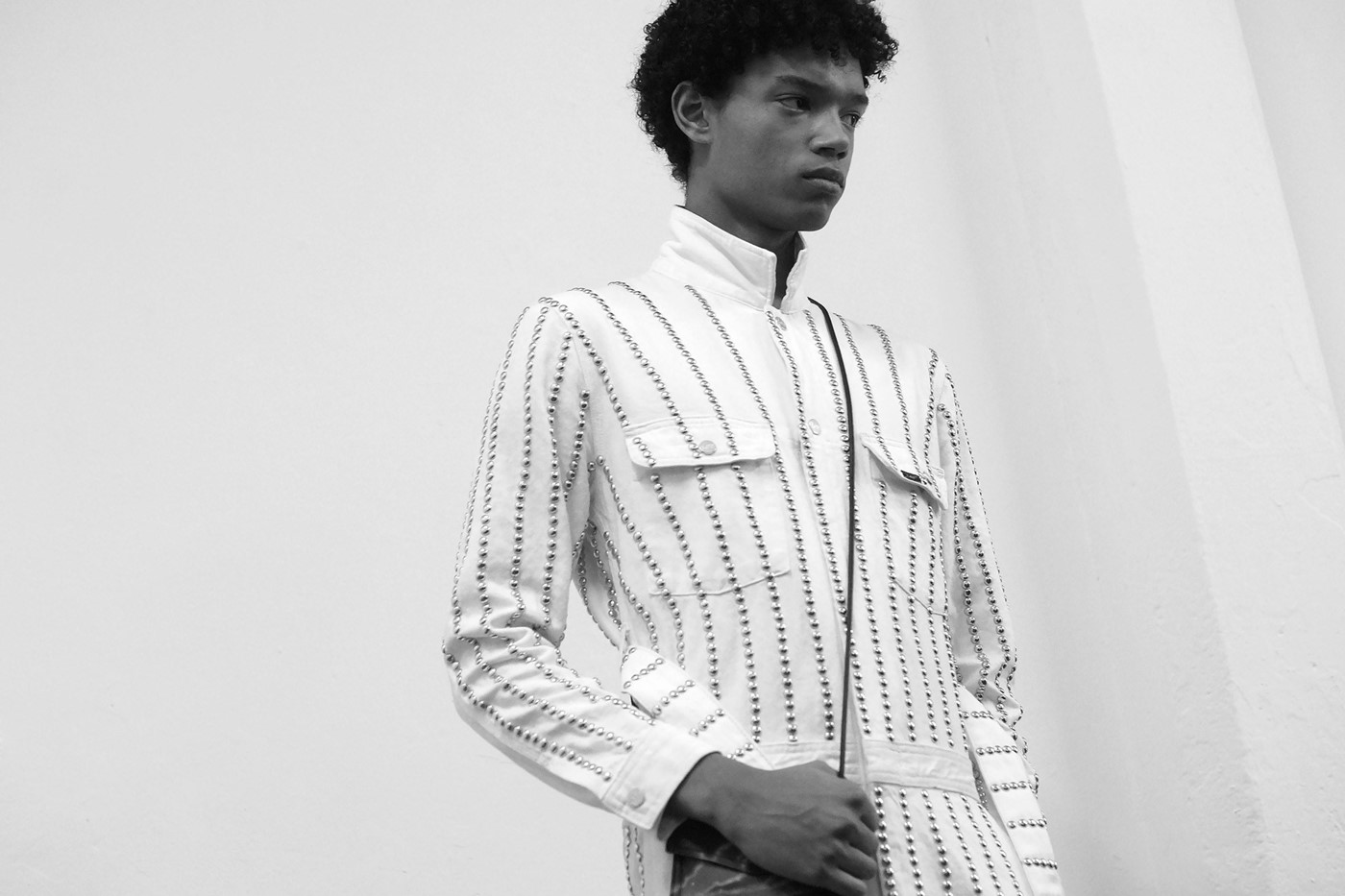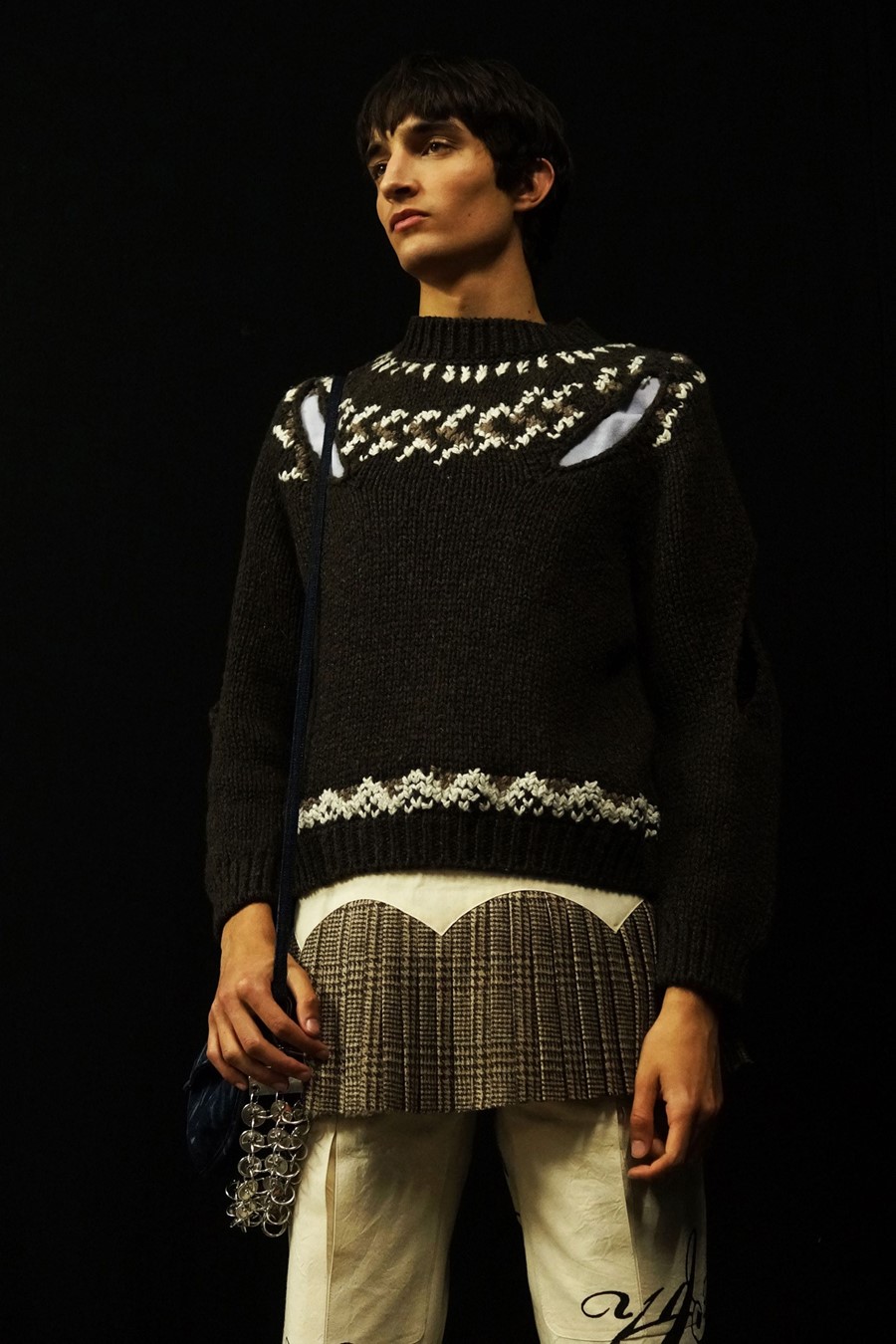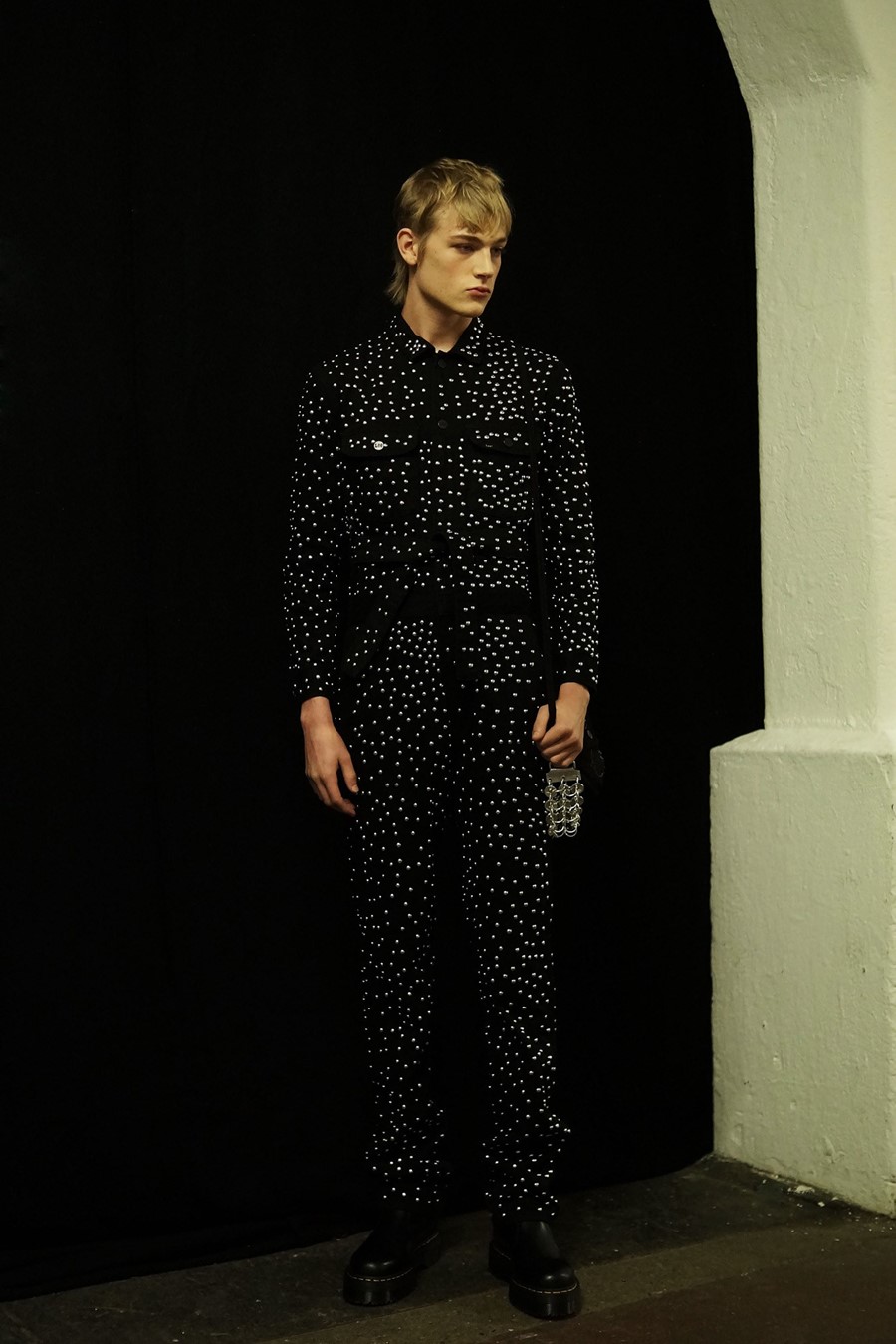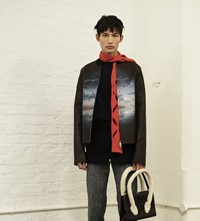Stefan Cooke: The Story Behind This Season’s Standout Show
- TextJack Moss
Jack Moss meets Stefan Cooke and Jake Burt in their new studio at the Sarabande Foundation, days before the duo present a stellar Autumn/Winter 2020 collection at London Fashion Week Men’s
Judging by the frenetic state of current affairs, the choice of title for Stefan Cooke’s latest collection – ‘The End’ – felt ruefully apt. The empty chairs and music stands which lined the runway at London’s Truman Brewery yesterday, part of the Zechariah Miah-designed set – a “skeleton orchestra”, as the notes described – certainly hinted an end-of-days mood.
But, a couple of days earlier, in a brightly lit space in the Sarabande Foundation – the charitable trust established in 2007 by Alexander McQueen – the duo behind the label, the eponymous Cooke and partner Jake Burt, were in optimistic spirits. With good reason: their first solo collection outside of Fashion East, Spring/Summer 2020, the season earlier, met the kind of acclaim which can make a young designer’s career. (A “precocious talent,” deemed American Vogue’s Sarah Mower; “provocatively different to anything else out there,” wrote Alexander Fury in the Financial Times.) Double-figure stockists have followed, from all four international outposts of Dover Street Market to Matchesfashion.com, an early supporter.
And they are optimistic about the upcoming collection, too, neatly arranged on a rail for the first day of styling which is taking place quietly in the background. Far from dystopian, the atmosphere is one of sleek professionalism; Cooke and Burt themselves seem preternaturally calm. “Every other season it’s always felt like a bit of a handful; we would get to this stage and have half a collection finished,” says Burt. “This is the first time we haven’t had to tell the stylist to imagine stuff while we finish it.” One explanation for the change might be the space they are in: this season they moved their studio from a warehouse in north London’s Seven Sisters to the Foundation, housed in a Grade II-listed Victorian stable conversion in a sedate enclave off the Regent’s Canal in east London’s Haggerston. “It feels like we’ve gone up a level,” says Cooke. “Maybe we just feel posher,” laughs Burt.
Cooke and Burt – who are also boyfriends – met almost a decade ago, in Paris. Both would go on to study the prestigious Central Saint Martins MA Fashion course; Cooke’s final collection, which printed digitally skewed versions of archetypal menswear pieces – Argyle and cricket jumpers, jeans, denim jackets – onto skin-tight synthetic clothing, to unsettling effect, won him that year’s L’Oréal Professional Creative Award. He demonstrated an ability to make recognisable clothes – ones so often reproduced they have somehow lost meaning – unrecognisable. “I wanted to create iconic pieces that everyone knows but in a way you don’t know them at all,” Cooke told AnOther at the time.
Burt, who studied womenswear, became involved not long afterwards, when a call from Lulu Kennedy’s Fashion East to take part in their upcoming show at London Fashion Week Men’s left Cooke with only five weeks to make a new collection. “I love these romantic stories where people are like ‘oh, I met this person blah blah blah’,” says Cooke. “But with us it was practicality: we had been together for six years by then, and I think to get it to the point I wanted to there was no way of doing it alone.” The three collections that followed saw the duo hone a sleek, slim and oftentimes glamorous vision, notable for the extraordinary level of craft some pieces demanded.

Most memorably, a series of garments – including an Argyle sweater – which appeared from afar to be made of fabric but, on closer inspection, actually consisted of hundreds of laboriously stitched-together buttons. These elaborately constructed pieces, much down to Cooke’s background in textiles, garnered particular attention. Technique became definitive of their work; it controlled the conversation. So this season, they stepped back and asked themselves: what might a Stefan Cooke collection look like if craft was no longer the raison d’être?
“I feel like there’s something about craft that can be easily relied on,” explains Cooke. “It’s a soundbite. Like: ‘it took five days to make one string of something’ and then everyone is impressed by it.” So they started by trying to work more instinctively; to create clothes they believed in, and thought people would really want to wear. It led them to womenswear: inspired by the razor-sharp focus of Nicolas Ghesquière’s definitive tenure at Balenciaga, and having met the designer as nominees of the LVMH Prize in 2019, they were led to the idea of elegance, finding inspiration in the cut of 1920s dresses (in the final collection this appears as a series of boat-necked outerwear, revealing the line of the male models’ décolletage).
“It’s about going with your gut, rather than trying to please everyone,” says Cooke. “Saying, you know what, I really love that this is a pair of trousers and a jacket and it’s really wearable, easy, but at the same time really beautiful, because it’s made from really old dress patterns.” They talk a lot about intuition (“this collection was all about intuition,” says Cooke). After nine years together, they demonstrate an uncanny ability to recall obscure fashion references and know exactly what the other is talking about. “We had the same education, the same interests – just being together for nine years, every time we went to an exhibition together, every time we discussed anything, it was a shared thing,” says Cooke.


On Sunday afternoon, this reliance on instinct made for perhaps their most freewheeling collection yet: the aforementioned outerwear, reminiscent of early Balenciaga and mid-century Dior, segued into denim jeans and overalls, some studded with thousands of rivets (the new denim offering is part of a collaboration with Lee Jeans). Mini-kilts were worn over trousers printed with scrawling cursive, combats were cut from English tweed (on some pairs, a different fabric above the thigh gave the illusion of shorts, or hot pants), knitwear – inspired by vintage Icelandic jumpers – was slashed across the chest and sleeves (“small changes make significant differences,” read the notes). Combined, it made for the weekend’s standout show – conclusive proof of Cooke and Burt’s prodigious talents.
But it also demonstrated newfound determination and focus. Before the show, they talk not just of looks, but of specific items of clothing (“products”) – a scarf, a jumper, a trouser, a bag. And the latter – their now-signature shoulder bags which playfully riff on ladylike bourgeois handbags (and are made for men) – is evidence that such focus can pay off: last season’s iterations are entirely sold out on Matchesfashion.com. Yesterday, they came with shearling straps, in denim, or air-brushed leather, a collaboration with Will Bond; one spelled out the collection’s title, ‘The End’, in dripping text.
After the show, Burt explained that the title – though referencing in some way a feeling of “impending doom” – was really not so ominous. “With the end of the decade, it felt like we were ushering out the old, and this was the new version of things,” he said. Besides, in a couple of weeks the collection will be transported to Paris to live its next life, presented for international buyers to purchase for their respective stores. You get the sense that this new thrill – the nitty-gritty of selling their clothing, of putting to the test their new approach – is becoming as important, if not more, than the spectacle of the show itself. “As a designer anyone can do a show, anyone can do that stuff,” Burt had said, back at the studio. “If you’re making a product people are buying and you are selling, that’s when you become a designer.”
















